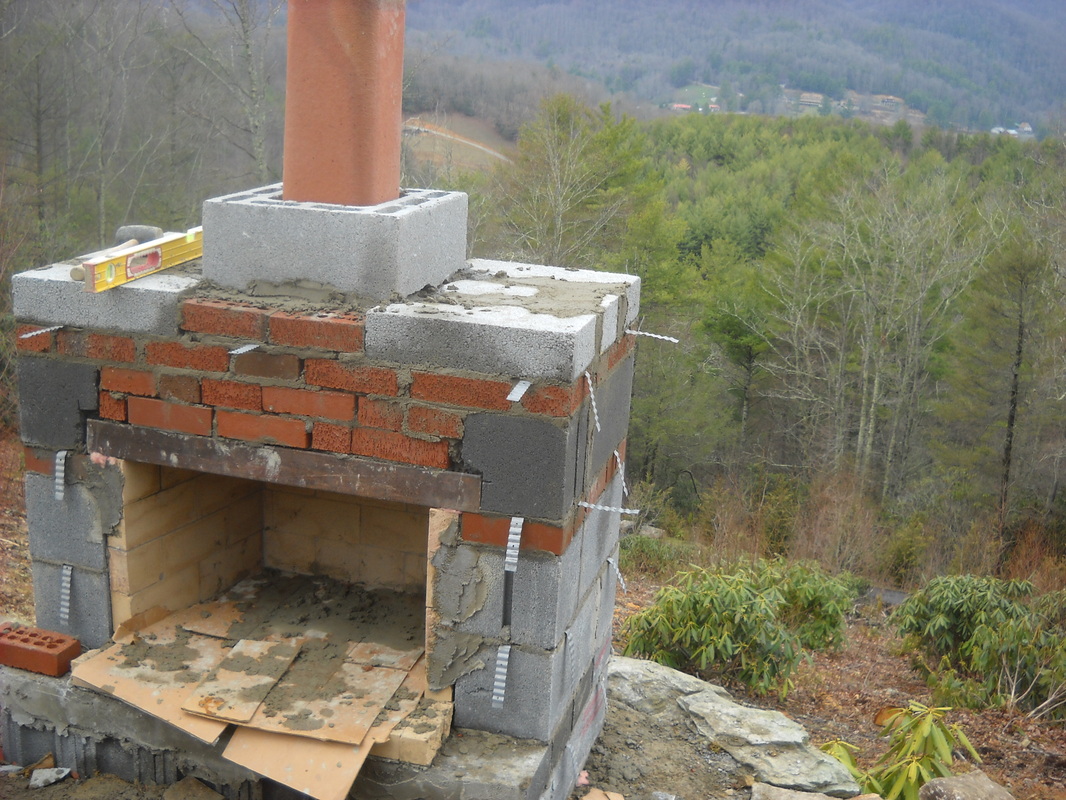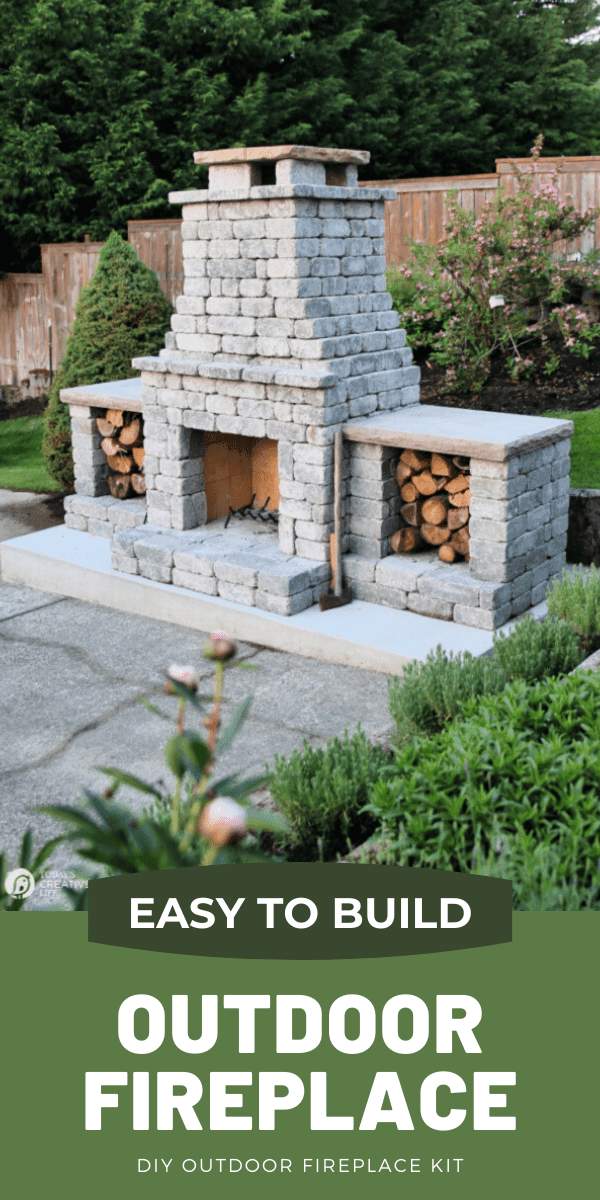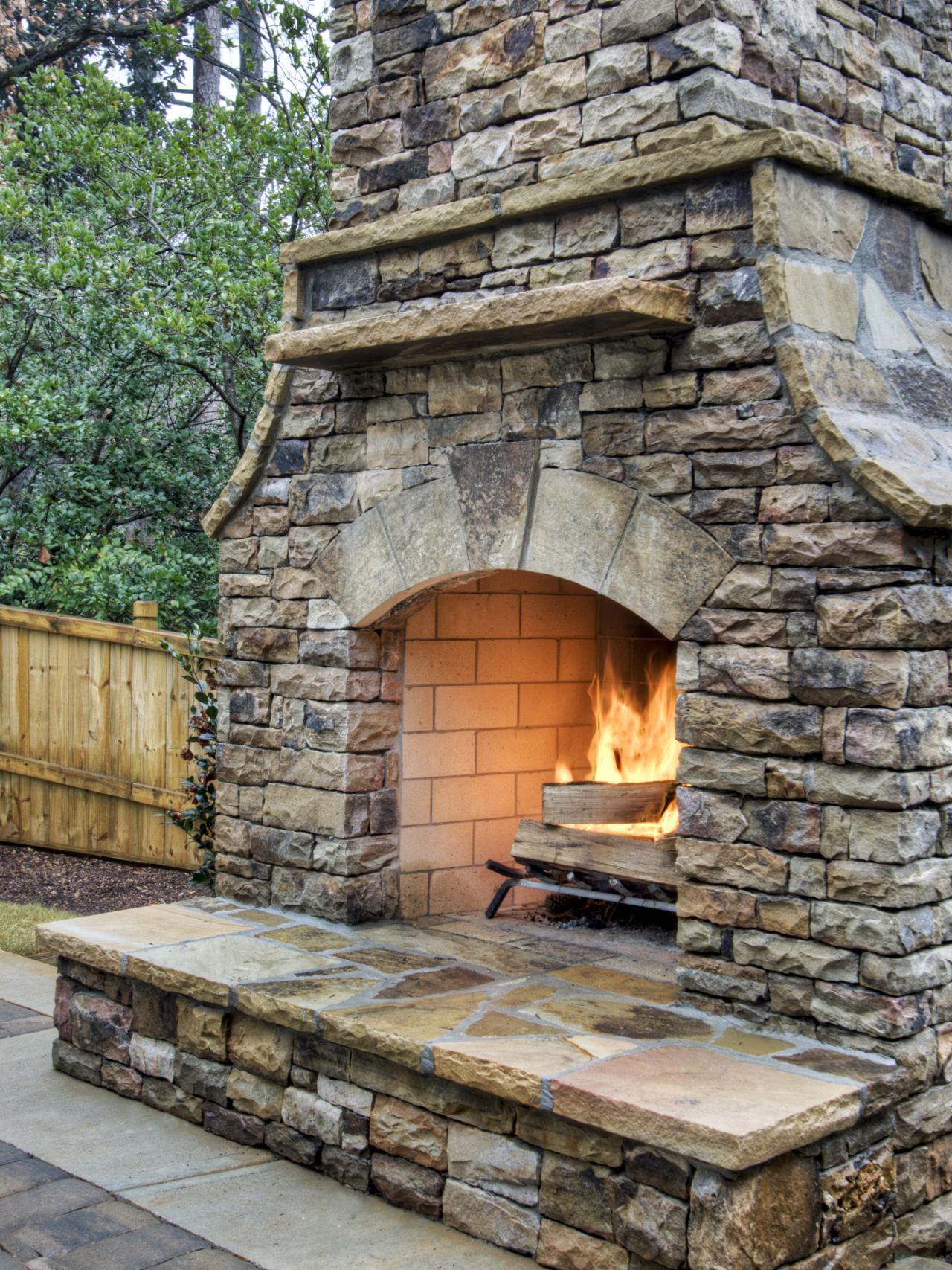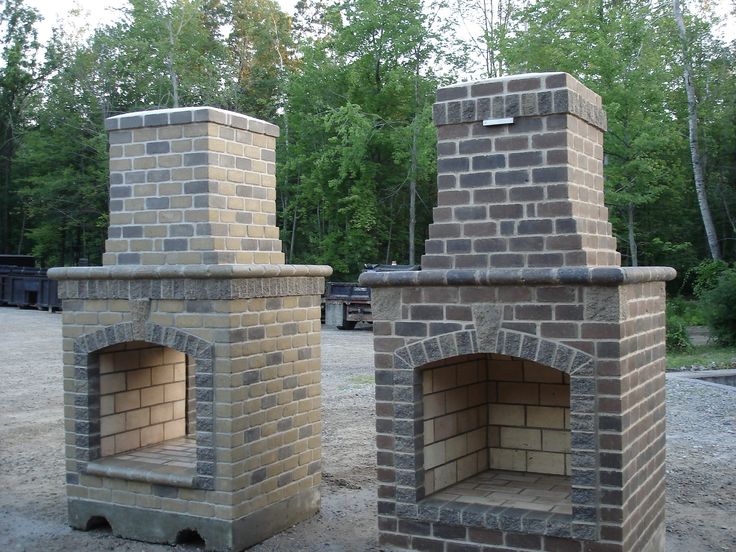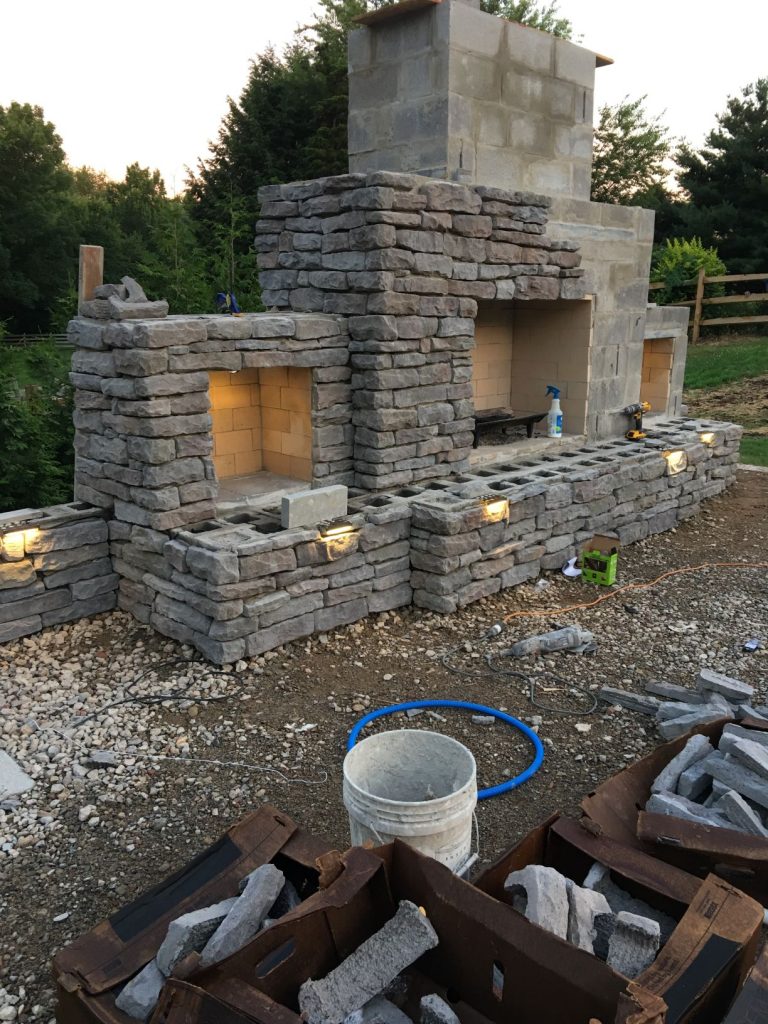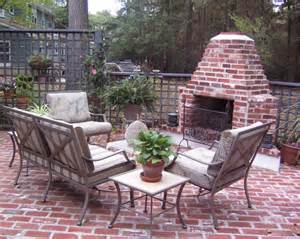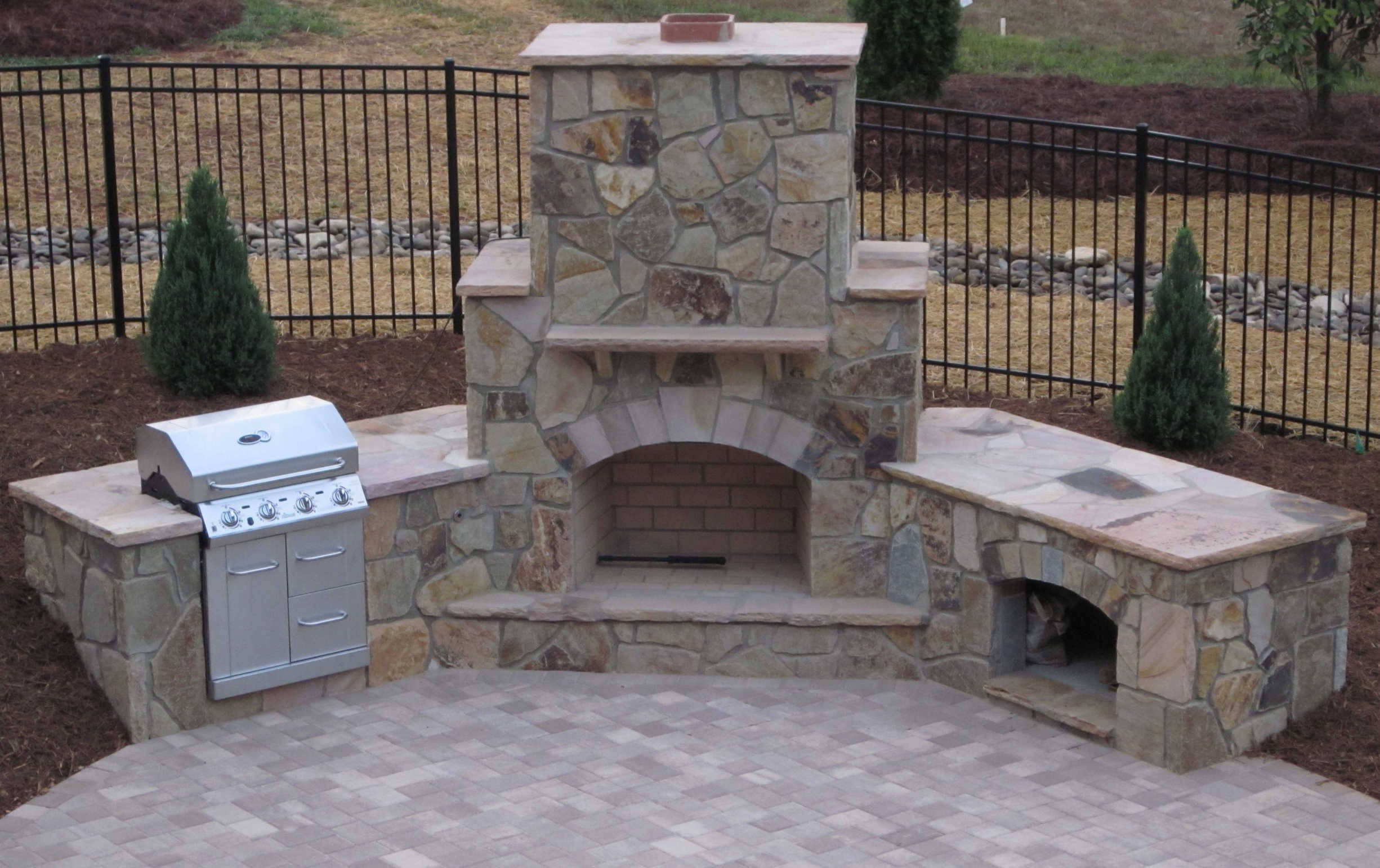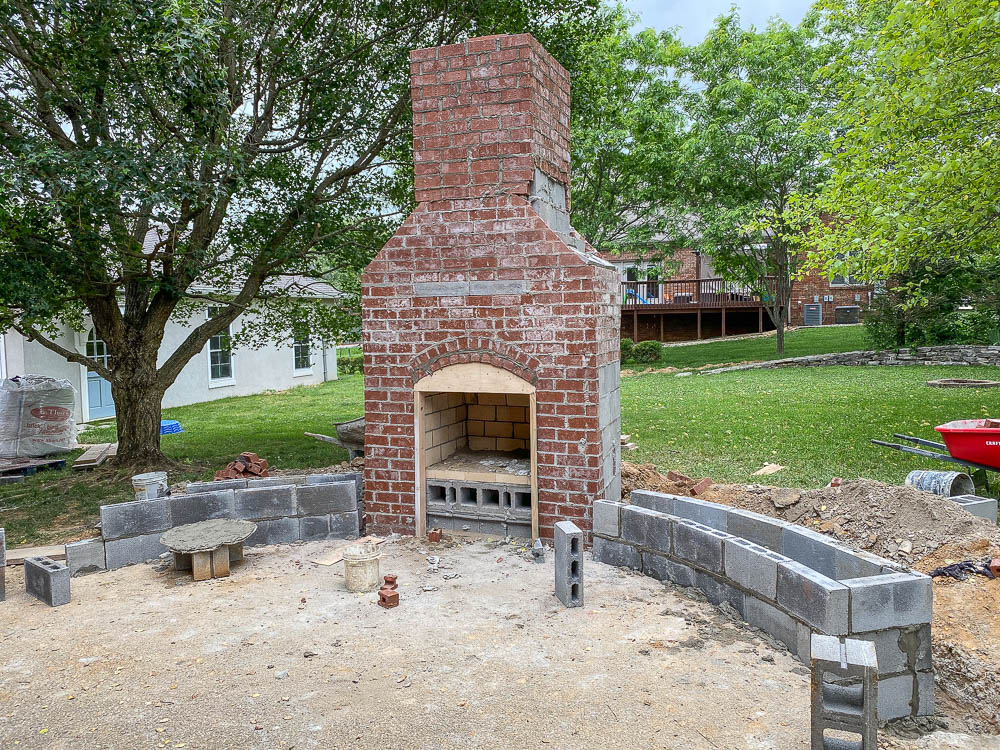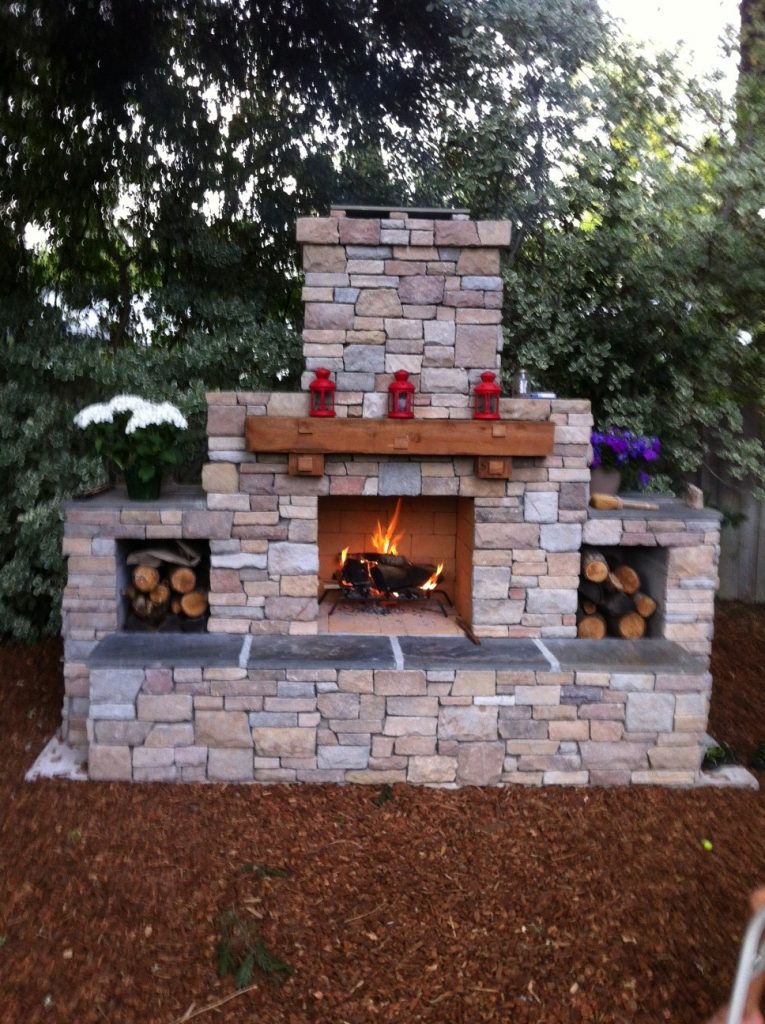Constructing an outdoor brick fireplace is a rewarding and functional addition to any outdoor living space, providing a focal point for gatherings and enhancing the overall ambiance. The process typically begins with careful planning and design. Homeowners need to decide on the fireplace’s size, location, and style, taking into account factors such as the available space, local building codes, and the intended use of the outdoor area. Design considerations may include whether the fireplace will be a standalone structure or part of a larger outdoor kitchen or living space.
Images about Outdoor Brick Fireplace Construction
Outdoor Brick Fireplace Construction

Once the design is finalized, the construction process commences with site preparation. Clearing the area and creating a stable foundation are essential steps. A concrete foundation is often recommended to ensure stability and prevent settling over time. The foundation should extend below the frost line to avoid potential damage caused by freezing and thawing.
The next step in outdoor brick fireplace construction involves building the firebox and chimney. High-quality firebrick and refractory mortar are typically used for these components to withstand the high temperatures generated by the fire. The firebox dimensions should be carefully determined to ensure efficient and safe combustion. The chimney design needs to comply with local building codes and provide adequate ventilation for the smoke and gases produced during combustion.
The outer layer of the fireplace, or the veneer, is where the aesthetic aspects come into play. Homeowners can choose from a variety of brick styles, colors, and patterns to match their desired aesthetic. It’s crucial to use weather-resistant mortar for the veneer to withstand the outdoor elements. The construction of the veneer involves carefully laying the bricks in the chosen pattern and applying mortar between them. This step requires precision to achieve a sturdy and visually appealing result.
To complete the outdoor brick fireplace construction, finishing touches such as a cap for the chimney and any additional features, like a mantel or hearth, are added. The cap serves to protect the chimney from the elements and prevent water infiltration. Homeowners may choose to incorporate a hearth for seating or a mantel for decorative purposes. These elements can be constructed from matching or complementary materials, such as stone or concrete, to enhance the overall design and functionality of the fireplace.
Proper maintenance is essential to ensure the longevity of an outdoor brick fireplace. Sealing the bricks and mortar helps protect them from moisture and harsh weather conditions. Regular cleaning, especially of the chimney, is crucial to prevent the buildup of creosote, which can pose a fire hazard. Following construction, homeowners should also familiarize themselves with local regulations regarding open burning and fire safety to ensure responsible and safe use of their outdoor fireplace. Overall, a well-constructed outdoor brick fireplace can become a beloved feature of the outdoor living space, providing warmth, ambiance, and a focal point for social gatherings.
Stunning Outdoor Fireplace Designs For Relaxing With Your
How to Build a DIY Outdoor Fireplace Your DIY Outdoor Fireplace
How to Make an Outdoor Brick Fireplace Firebrick for Fireplace
how to build an outdoor fireplace
How to Plan for Building an Outdoor Fireplace HGTV
How to build an outdoor fireplace – Step-by-step guide
Outdoor Fireplace with Bench Seating (w/ tips from a professional
DIY Outdoor Fireplace Costs Your DIY Outdoor Fireplace Headquarters
Related Posts:
- Outdoor Masonry Fireplace Design
- Fire Sense Outdoor Patio Fireplace Vinyl Cover
- Cement Outdoor Fireplace
- Outdoor Fireplace Cooking Accessories
- Outdoor Fireplace Pergola
- Garden Chiminea Outdoor Fireplace
- Outdoor Gas Fireplace Rings
- Outdoor Fireplace And Oven Plans
- DIY Outdoor Fireplace With Pizza Oven
- How To Build Outdoor Oven Fireplace
Outdoor Brick Fireplace Construction: Enhancing Your Outdoor Living Space
An outdoor brick fireplace is a timeless addition to any backyard or patio, offering warmth, ambiance, and a gathering place for family and friends. Constructing an outdoor brick fireplace requires careful planning, precise execution, and attention to detail. In this article, we will explore the step-by-step process of building an outdoor brick fireplace, along with the materials required, common challenges faced, and frequently asked questions to help you create the perfect outdoor oasis.
Planning and Design:
Before embarking on your outdoor brick fireplace construction journey, it is integral to plan and design your project thoroughly. Consider the location of your fireplace, its size, and the overall aesthetic you wish to achieve.
When choosing a location for your outdoor brick fireplace, ensure it is positioned away from any combustible materials and structures. The ideal location should provide sufficient ventilation while creating a focal point within your outdoor living space.
How far should my outdoor brick fireplace be from my house?
It is recommended to have at least 10 feet of clearance between your outdoor brick fireplace and any combustible structures such as houses or sheds. However, local building codes may vary, so it is advisable to consult with a professional before finalizing the distance.
Gathering Materials:
To construct an outdoor brick fireplace, certain materials are essential for achieving durability and structural integrity.
Bricks: Choose high-quality fire bricks specifically designed for outdoor use. These bricks are resistant to high temperatures and provide excellent insulation.
Mortar: Select a mortar mix suitable for outdoor applications that can withstand extreme heat. Pre-mixed mortars containing fire clay are commonly used for brick fireplaces.
Reinforcement: Depending on the size and design of your outdoor brick fireplace, you may require reinforcement in the form of rebar or masonry wire mesh. This provides added strength and stability.
Can I use regular bricks for my outdoor brick fireplace?
Regular bricks are not suitable for outdoor brick fireplace construction due to their vulnerability to cracking and spalling when exposed to high temperatures. It is crucial to use fire bricks specifically designed for enduring heat.
Building the Foundation:
The foundation plays a vital role in supporting the weight of your outdoor brick fireplace and ensuring its stability. Start by digging a trench that will serve as the footing for the foundation.
Next, create a concrete mixture using cement, sand, and gravel in the recommended ratio. Pour this mixture into the trench, ensuring it is leveled and compacted properly. Insert rebar into the wet concrete to reinforce the foundation.
How deep should my outdoor brick fireplace foundation be?
The depth of your outdoor brick fireplace foundation depends on several factors, including soil conditions and local building codes. In general, a depth of 12-18 inches is often recommended. However, it is advisable to consult with an engineer or adhere to building codes specific to your area for precise measurements.
Constructing the Firebox:
The firebox forms the core of your outdoor brick fireplace, housing the fire and protecting the surrounding structure from heat damage. Begin by building a wooden form that outlines the dimensions of the firebox.
Using fire bricks and mortar, lay a single layer of bricks within the wooden form, ensuring they are level and plumb. As you progress, apply mortar between each brick, creating a strong bond that can withstand intense heat.
Brick fireplace with firebrick is highly recommended. Firebricks are designed to withstand high temperatures and provide excellent insulation, protecting the surrounding structure from heat damage. It is an essential step in ensuring the durability and safety of your outdoor brick fireplace.
Firebricks, also known as refractory bricks or heat bricks, are made from special materials that can withstand extreme heat. They are designed to resist cracking, crumbling, and breaking when exposed to high temperatures.
Using firebricks in your outdoor brick fireplace helps to create a more efficient and safe heating system. Firebricks have excellent insulation properties, which means they can contain and direct heat more effectively. This results in a more efficient use of fuel and a higher level of heat output.
Another benefit of using firebricks is their ability to protect the surrounding structure from heat damage. Regular bricks can crack or break under extreme heat, leading to structural damage over time. Firebricks provide an extra layer of protection, preventing heat from transferring to the outer surface of the fireplace.
In addition to their durability and insulation properties, firebricks also have aesthetic benefits. They come in various shapes and sizes, allowing you to customize the design of your brick fireplace. Whether you prefer a traditional look or a more modern style, firebricks can help you achieve the desired aesthetic.
Overall, using firebricks in your outdoor brick fireplace is highly recommended for both safety and durability reasons. They can withstand high temperatures, provide excellent insulation, and protect the surrounding structure from heat damage. Investing in firebricks is an essential step in creating a long-lasting and efficient outdoor fireplace.
As you progress, build up the sides of the chimney using regular bricks and mortar, ensuring proper alignment and stability. Pay attention to the height of the chimney, as it should be tall enough to create sufficient draft for efficient smoke venting.
To build up the sides of the chimney, follow these steps:
1. Start by laying a row of regular bricks along the edges of the base of the chimney. Apply a layer of mortar on the base and press the bricks firmly into place.
2. Use a level to ensure that the bricks are aligned and make any necessary adjustments while the mortar is still wet.
3. Apply mortar between each brick to secure them together. Use a trowel to spread the mortar evenly, ensuring it fills any gaps.
4. Continue adding rows of bricks, applying mortar between each layer, until you reach your desired height for the chimney. Remember to periodically check for proper alignment and stability.
5. As you progress, consider leaving openings or vents in the chimney to allow air circulation for efficient smoke venting. These can be created by skipping some bricks or placing specialized chimney vents.
6. Make sure to periodically check that each row is level and plumb (vertically straight) as you work your way up.
7. Once you reach the desired height, allow the mortar to dry and set according to manufacturer instructions before proceeding further with your chimney construction.
Remember to always wear appropriate safety gear, such as gloves and safety glasses, when working with mortar and bricks. If you are unsure about any step or lack experience in construction, it may be wise to consult a professional mason or builder for assistance.
